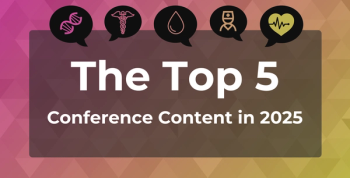
Women Are Drinking More, Driving Up Rates of Alcohol Use, Study Finds
Researchers from the University of Washington examined drinking patterns down to the county level, and found wide disparities within state borders. This suggests that solutions to problem drinking must be found locally.
Heavy drinking is rising rapidly but unevenly across the United States, fueled by more alcohol use among women, according to a new study that details America’s drinking habits down to the county level.
While those who consume alcohol are drinking more, the sizable share of adults who don’t drink at all has stayed the same at 44%, according to researchers from the Institute for Health Metrics and Evaluation (IHME) at the University of Washington.
The study, “Drinking patterns in US counties from 2002 to 2012,” appeared in the American Journal of Public Health Thursday and was presented at the Association of Health Care Journalists conference in Santa Clara, California.
The study covered drinking data for adults over age 21. Overall, researchers found huge variations in the share of people in a county who drink at all, from 11.0% to 78.7%.
Heavy drinking, which the CDC defines as exceeding 1 drink per day for women and 2 drinks per day for men over the past month, increased 17.2% between 2005 and 2012. But the prevalence of heavy drinking varied, from 2.4% in Hancock County, Tennessee, to 22.4% in Esmeralda County, Nevada, with a national average of 8.2%.
Binge drinking, which CDC defines as consuming 4 or more drinks at one time for women, and 5 or more for men, has increased 8.9% since 2005, and ranges from 5.9% in Madison County, Idaho, to 36.0% in Menominee, Wisconsin, with an average of 18.3%.
The most striking finding, however, was the rapid increase in binge drinking among women. Rates for women rose 17.5% between 2005 and 2012, compared with 4.9% for men. “We are seeing some very alarming trends in alcohol overconsumption, especially among women,” Dr. Ali Mokdad, a lead author of the study and professor at IHME, said in a statement. “We also can’t ignore the fact that in many US counties a quarter of the people, or more, are binge drinkers.”
The prevalence of both heavy drinking and binge drinking increased almost everywhere between 2005 and 2012, but the magnitude of change varied. While there were some regional differences, with states in the Northeast and West showing higher overall drinking rates than those in the South, researchers were more taken with the wide disparities in drinking patterns within state borders. This suggests, they said, that efforts to combat problem drinking must occur locally.
Binge drinking is associated with a higher risk for serious injuries, motor vehicle accidents, alcohol poisoning and acute organ damage. Heavy drinking is considered a risk factor for longer-term health problems, such as liver cirrhosis and cardiovascular disease. Under the Affordable Care Act, treatment for substance abuse disorders is considered an essential health benefit, and CMS has taken steps to clarify the rights of beneficiaries to obtain services.
Reference
Dwyer-Lindgren L, Flaxman AD, Ng M, Hansen GM, Murray CJL, Mokdad AH. Drinking patterns in US counties from 2002 to 2012. American Journal of Public Health. 2015; e1-e8. doi:10.2105/AJPH.2014.302313
Newsletter
Stay ahead of policy, cost, and value—subscribe to AJMC for expert insights at the intersection of clinical care and health economics.









































